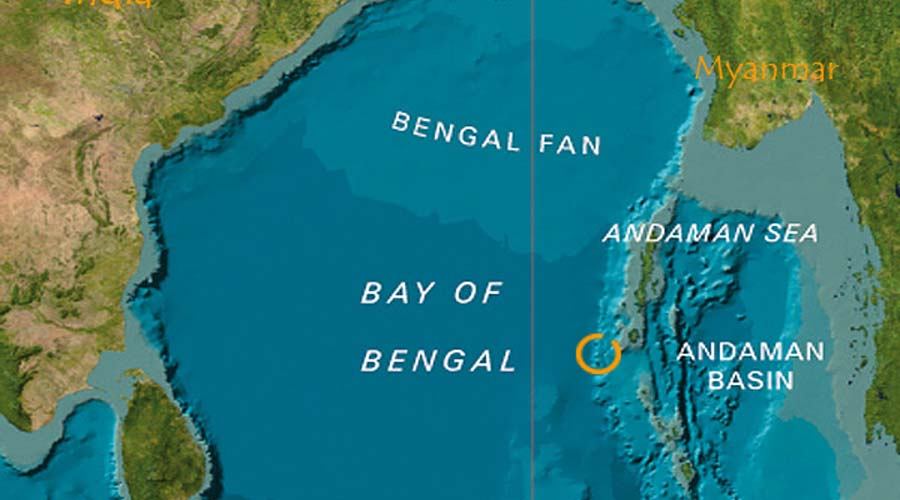The Bay of Bengal is one of the most important and iconic water bodies surrounding the Indian subcontinent. Known for its vast expanse, rich biodiversity, and strategic maritime importance, it holds great cultural, economic, and geographic significance for India. Understanding where the Bay of Bengal is located in India and how it influences the country’s geography, climate, and trade provides valuable insight into its maritime identity and national development.
Geographical Location of the Bay of Bengal
The Bay of Bengal lies in the northeastern part of the Indian Ocean, bordered primarily by India, Bangladesh, and Myanmar. It forms the largest bay in the world, covering an area of about 2.2 million square kilometers. In India, the Bay of Bengal touches the eastern coastline, stretching from the state of West Bengal in the north to Tamil Nadu in the south.
To pinpoint its geographic boundaries:
- North: It meets the delta formed by the Ganges, Brahmaputra, and Meghna rivers in Bangladesh and West Bengal.
- West: It borders the coastal plains of Odisha, Andhra Pradesh, and Tamil Nadu.
- East: It is flanked by Myanmar and the Andaman and Nicobar Islands (Indian territories).
- South: It opens into the broader Indian Ocean, blending with the waters near Sri Lanka and the Andaman Sea.
The Bay of Bengal is often referred to as the “eastern arm” of the Indian Ocean, symbolizing its deep connection with the Indian subcontinent’s maritime geography.
Indian States Bordering the Bay of Bengal
Several Indian states have coastlines along the Bay of Bengal, each known for unique ports, cultural heritage, and economic activities.
1. West Bengal:
The northernmost coastal state on the Bay of Bengal, West Bengal is home to the Sundarbans Delta, the largest mangrove forest in the world and a UNESCO World Heritage Site. The state capital, Kolkata, lies inland but connects to the sea via the Hugli River, an important maritime channel since colonial times.
2. Odisha:
Odisha has a long coastline dotted with fishing villages, ports, and pilgrim destinations. Puri Beach and Chilika Lake are major attractions. The Paradip Port, located here, is one of India’s major deep-water ports handling cargo trade across the Bay.
3. Andhra Pradesh:
Andhra Pradesh’s coast is known for cities like Visakhapatnam and Kakinada, both key industrial and naval hubs. The Visakhapatnam Port is one of India’s largest ports, contributing significantly to trade, defense, and shipbuilding.
4. Tamil Nadu:
Tamil Nadu’s coast runs along the southern stretch of the Bay. It boasts ports such as Chennai, Ennore, and Tuticorin, all of which play crucial roles in India’s maritime commerce. The coastal region is also famous for its temples, beaches, and fishing industries.
5. Puducherry (Union Territory):
The Union Territory of Puducherry, though small, shares a coastal stretch along the Bay of Bengal and is known for its French colonial architecture and tourism.
These states collectively make up India’s eastern coastal plain, characterized by fertile deltas, sandy beaches, and thriving maritime communities.
Major Rivers Flowing into the Bay of Bengal
Several of India’s most important rivers drain into the Bay of Bengal, enriching it with silt and nutrients that sustain marine biodiversity and agriculture along the coast. Major rivers include:
- Ganga: Originating in the Himalayas, it flows eastward and merges with the Brahmaputra to form the world’s largest delta before entering the Bay.
- Brahmaputra: After descending from Tibet, it converges with the Ganga in Bangladesh before flowing into the bay.
- Mahanadi: This major river from Chhattisgarh and Odisha drains into the Bay near Paradip.
- Godavari: Often called the “Dakshina Ganga,” it flows through central India before joining the bay near Andhra Pradesh.
- Krishna: Originating in Maharashtra, it empties into the Bay near the Andhra coast.
- Cauvery: Flowing through Karnataka and Tamil Nadu, it finally enters the Bay near Poompuhar.
These river systems not only shape the coastal topography but also create rich deltas that serve as the agricultural backbone for millions.
Economic and Strategic Importance
The Bay of Bengal is integral to India’s economic and strategic framework. Its maritime routes connect Indian ports to Southeast Asia, East Asia, and the Pacific. Several points highlight its economic and geopolitical role:
- Trade and Ports: The eastern coastline is lined with major ports—Chennai, Visakhapatnam, Paradip, Haldia, and Ennore—that handle exports like petroleum, coal, iron ore, and textiles.
- Fisheries: The bay supports a thriving fishing industry, providing livelihoods to millions of coastal residents. Species like prawns, tuna, and sardines are abundant.
- Energy and Minerals: Offshore oil and gas reserves in the Krishna-Godavari basin make the region a hub for India’s energy exploration.
- Strategic Defense: The Indian Navy maintains an important base in Visakhapatnam, overseeing maritime security in the eastern waters and the Andaman Sea.
Additionally, the Bay of Bengal Initiative for Multi-Sectoral Technical and Economic Cooperation (BIMSTEC) underscores its importance as a zone of regional cooperation among neighbouring countries.
Climatic and Environmental Influence
The Bay of Bengal plays a major role in influencing India’s monsoonal climate. The southwest monsoon winds gather moisture from the bay and bring rainfall across the Indian heartland. However, the region is also prone to cyclones, which frequently form over the bay and move toward India and Bangladesh. States like Odisha, Andhra Pradesh, and Tamil Nadu often face cyclonic storms such as “Fani,” “Titli,” and “Nivar,” which impact agriculture and coastal settlements.
The bay’s ecosystem includes coral reefs, mangroves, and estuaries that act as natural barriers against storms, though growing industrialization and rising sea levels pose ecological challenges.
Tourism and Cultural Significance
The Bay of Bengal coastal belt is not just economically vital but also culturally vibrant. It hosts numerous pilgrimage destinations, heritage sites, and beaches:
- Puri in Odisha, famous for the Jagannath Temple and annual Rath Yatra.
- Marina Beach in Chennai, one of the longest urban beaches in the world.
- Karaikal and Pondicherry known for colonial architecture and serene coastal beauty.
- Sundarbans National Park, a UNESCO-listed mangrove forest, home to the Royal Bengal Tiger.
- Rameswaram, near the southern tip, holds religious importance in Hindu mythology as part of Lord Rama’s epic journey.
These coastal regions symbolize the deep connection between Indian spirituality and the sea, linking mythology, economy, and geography.
Conclusion
The Bay of Bengal, situated along India’s eastern coast, is not only a geographical landmark but also a lifeline that sustains millions through trade, fishing, culture, and ecology. From the deltas of Bengal to the ports of Tamil Nadu, it unites diverse regions under one vast maritime identity. Its strategic role, climatic influence, and cultural richness make it an indispensable part of India’s natural heritage and global oceanic presence. As India continues to expand its “Blue Economy,” the Bay of Bengal remains central to its vision of sustainable maritime growth and regional cooperation.



